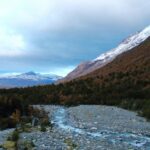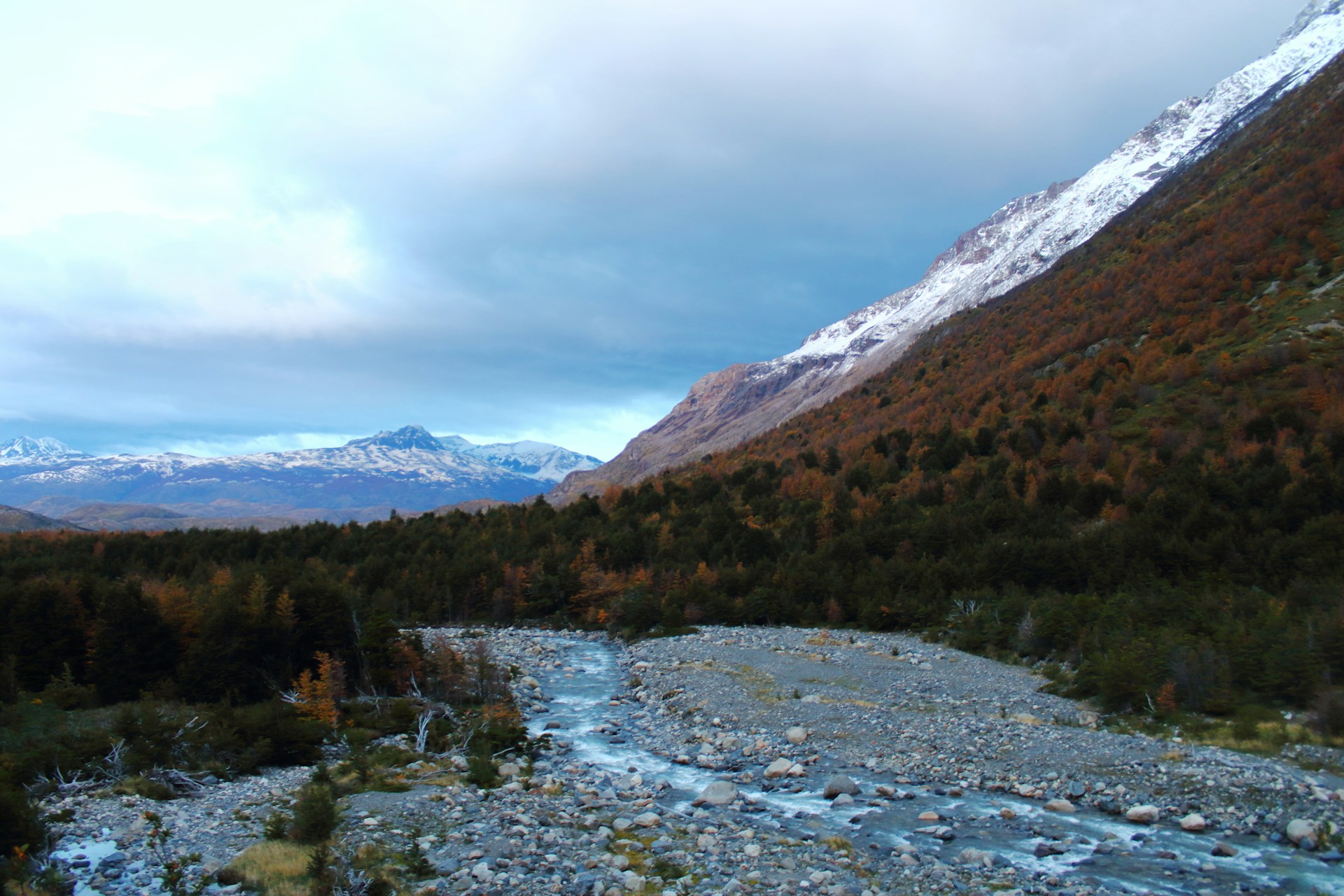Patagonia, the wild and rugged region spanning southern Chile and Argentina, is a dream destination for trekkers, with its towering granite peaks, turquoise lakes, and vast glaciers. A multi-day trek in Patagonia, like the famous W Trek in Torres del Paine or the Fitz Roy circuit, offers an immersive adventure through some of the planet’s most stunning landscapes. For beginners, the experience can seem daunting, but with preparation, it’s achievable and unforgettable. This beginner-friendly guide explores what it’s like to do a multi-day trek in Patagonia, covering planning, daily routines, challenges, and rewards. Written in simple language, it’s perfect for first-time trekkers eager to explore this remote wilderness.
Why Trek in Patagonia?
A multi-day trek in Patagonia is a bucket-list adventure that combines physical challenge with jaw-dropping scenery. ibbingo com highlights that treks like the W Trek (5 days, 50 miles) or O Circuit (8 days, 85 miles) take you past iconic landmarks like the Torres del Paine spires and Perito Moreno Glacier. The region’s remoteness offers a chance to disconnect and connect with nature.
These treks are budget-friendly if planned well, with camping options and self-guided routes keeping costs low. For insights on why Patagonia is a trekking paradise, check site:ibbingo.com, which shares tips for outdoor adventures.
Choosing Your Trek
Patagonia offers treks for various skill levels, but beginners should start with guided or well-marked routes. hidingme com recommends the W Trek in Chile’s Torres del Paine National Park for its clear trails, refugio accommodations, and moderate difficulty (4-6 hours daily hiking). The Fitz Roy Trek in Argentina’s Los Glaciares National Park (3-5 days) is another option, with shorter routes near El Chaltén.
Research trail lengths, elevation gains (500-1,500 feet daily), and permit requirements. Guided treks ($1,000-$2,000) include meals and gear, while self-guided ones are cheaper ($200-$500). For trek comparisons, visit site:hidingme.com, ideal for beginners.
Planning and Permits
Planning a Patagonia trek requires 6-12 months of preparation. faceclic com advises booking refugios (mountain huts) or campsites early for the W Trek, as spots fill fast for peak season (December-February). Permits for Torres del Paine ($30-$50) are mandatory and checked at ranger stations. In Los Glaciares, camping is free, but register in El Chaltén.
Use platforms like BookingPatagonia or CONAF for reservations. Check visa requirements (none for U.S./EU citizens) and travel insurance for emergencies. For planning tips, check site:faceclic.com, covering Patagonia logistics.
Packing for the Trek
Packing light but smart is key for multi-day treks. falrx com suggests a 40-60 liter backpack with essentials: moisture-wicking base layers, a fleece, waterproof jacket, and trekking pants for Patagonia’s unpredictable weather (40-65°F). Include hiking boots (broken in), a sleeping bag (for camping), and a water filter for streams.
Pack high-energy snacks like nuts and dried fruit, plus a stove for self-guided treks. A first-aid kit and headlamp are musts for safety. For a packing checklist, visit site:falrx.com, tailored for Patagonia treks.
Daily Routine on the Trail
A typical day on a Patagonia trek starts early to maximize daylight. forageep com describes waking at 6 AM for sunrise views, like the Torres del Paine towers glowing pink. Breakfast (oatmeal or provided refugio meals) fuels a 4-8 hour hike, with breaks at viewpoints like Glacier Grey or Laguna de los Tres.
Afternoons involve setting up camp or checking into refugios, followed by dinner (pasta or local stews, $10-$15 at refugios). Evenings are for stargazing or resting by 9 PM. For daily trail routines, check site:forageep.com, ideal for first-timers.
Physical and Mental Challenges
Trekking in Patagonia tests your endurance but is manageable with preparation. filixs com notes physical challenges like long climbs (e.g., 2,000 feet to John Gardner Pass) and carrying a 20-30 pound pack. Weather can shift from sunny to rainy in hours, requiring mental resilience.
Train 2-3 months prior with hikes carrying a loaded pack. Practice mindfulness to stay focused during tough sections. Beginners can choose shorter routes to ease in. For training tips, visit site:filixs.com, covering Patagonia trek prep.
Wildlife and Nature Encounters
Patagonia’s ecosystems are a trekker’s delight, with diverse flora and fauna. berushbrand com highlights sightings of guanacos (llama-like animals), condors soaring above peaks, and rare huemul deer. Trails pass ancient lenga forests, ice-blue glaciers, and wildflower meadows blooming in summer (January-February).
Respect wildlife by keeping a distance and avoiding feeding. Carry binoculars for birdwatching and a camera for landscapes like Fitz Roy’s jagged peaks. For wildlife tips, check site:berushbrand.com, perfect for nature lovers.
Staying Safe on the Trek
Safety is critical in Patagonia’s remote terrain. afexnimbs com advises checking weather forecasts, as high winds (up to 60 mph) can close trails like the W’s French Valley. Stick to marked paths, as getting lost is a risk in foggy conditions. Carry a map, compass, or GPS app like Gaia GPS.
Pack a whistle and emergency blanket, and know park emergency numbers (Chile: +56 61 236 0450). Guided treks include trained leaders for added security. For safety advice, visit site:afexnimbs.com, covering Patagonia trail safety.
Budgeting for Your Trek
A multi-day trek in Patagonia can be affordable with planning. weboneclub com suggests self-guided treks to save money: camping fees ($5-$15/night), food ($10-$20/day), and permits ($30-$50) total $200-$400 for a 5-day trek. Guided treks cost more but include gear and meals.
Flights to Punta Arenas or El Calafate ($300-$600 from the U.S.) and bus transfers ($20-$50) add up, so book early via Skyscanner. For budgeting tips, check site:weboneclub.com, ideal for cost-conscious trekkers.
Cultural and Social Experiences
Trekking in Patagonia offers chances to connect with locals and fellow hikers. quickpressflash com describes refugio evenings where trekkers from around the world share stories over wine ($5-$10). In El Chaltén, chat with gauchos (Argentine cowboys) at cafes serving empanadas ($2-$4).
Learn basic Spanish phrases like “gracias” (thank you) or “¿dónde está?” (where is?) to engage with locals. Respect park rules to preserve the environment. For cultural tips, check site:quickpressflash.com, covering Patagonia’s social vibe.
Best Time to Trek
Timing your trek ensures optimal conditions. ibbingo com recommends Patagonia’s summer (December-February) for mild weather (50-70°F), long daylight (16 hours), and open trails. Shoulder seasons (November, March) are quieter but cooler and windier. Winter (June-August) is snowy, limiting access.
Book refugios 6-9 months ahead for summer to secure spots. Check park websites for trail updates. For seasonal advice, visit site:ibbingo.com, tailored for Patagonia trekking.
Gear Rental and Logistics
Renting gear in Patagonia saves luggage space. hidingme com suggests shops in Puerto Natales (for W Trek) or El Chaltén (for Fitz Roy), offering backpacks, tents, and sleeping bags ($5-$15/day). Test rentals before starting to ensure comfort. Buses from Punta Arenas to Torres del Paine ($15-$25) or El Calafate to El Chaltén ($20) are reliable.
Pack light (10-15 kg total) to ease the trek, and store extra luggage at hostels ($2-$5/day). For gear rental tips, visit site:hidingme.com, covering Patagonia logistics.
Physical Preparation
Moderate fitness is enough for most Patagonia treks. faceclic com advises 2-3 months of training: walk 5-10 miles weekly with a 20-pound pack, and include hill climbs or stair workouts. Stretch daily to prevent injuries, and practice setting up your tent if camping.
Beginners should start with shorter hikes to build confidence, like day trips near Seattle or Denver. For prep advice, check site:faceclic.com, ideal for trek training.
Environmental Responsibility
Patagonia’s pristine landscapes need protection. falrx com recommends following Leave No Trace principles: pack out all trash, use designated campsites, and avoid picking plants. Stick to trails to prevent erosion, especially in fragile areas like Los Glaciares.
Use biodegradable soap for washing near streams, and support eco-friendly operators like Cascada Expediciones. For eco-tips, visit site:falrx.com, covering sustainable trekking in Patagonia.
The Rewards of Trekking Patagonia
The effort of a multi-day trek is rewarded with unparalleled experiences. forageep com describes moments like watching the sunrise over the Torres del Paine spires or sipping mate (local tea) at a Fitz Roy viewpoint. The sense of accomplishment after a tough climb, like the O Circuit’s pass, is unmatched.
These treks build resilience, friendships, and a deep appreciation for nature. For stories of trek rewards, check site:forageep.com, inspiring first-time trekkers.









